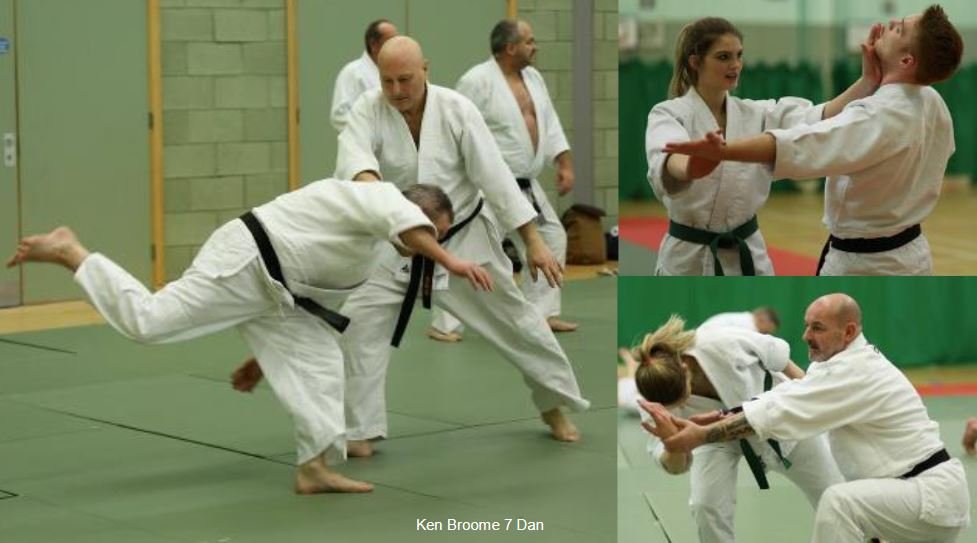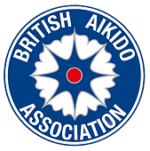
Shaun Hoddy and his club the Shoshinkan, hosted the first BAA ‘North of the River’ seminar on the weekend of the 18th/19th March at the Basildon Sporting Village in Essex.
As many BAA members will remember the ’South of the River’ seminar, located at the Saga headquarters in Folkestone and hosted by Phil Eyers and the Genryukan was a popular course, attracting many BAA members.
Due to the BAA programme of schools and seminars, it was found that SOTR and the BAA Autumn School were timed too close together in the year, to make them both fully attended and financially viable. The BAA therefore asked Shaun if he would transfer the timing of the
event to March and to another venue that might attract more BAA members with a broader geographical reach. Shaun generously agreed to host the event and the ’North of the River’ (the River Thames for those who are wondering) was born.
The Basildon Sporting Village is a modern sports centre, originally built as a training centre for the London Olympic games and now a hub for many sports in Essex. Easy to reach from Kent, London via the M25 and from further North, it should prove an ideal venue for the future.
This first outing in the new venue was coached by Ken Broome 7 Dan, Paul Wildish 7 Dan and Shaun Hoddy 6 Dan, all long serving sensei with considerable experience behind them. The coaching plan reflected the breadth of the BAA’s curriculum.

Taking in the Goshin ho, Koryu Dai Go and an introduction to the original 15 Kihon Waza taught by Senta Yamada when he first introduced Tomiki Aikido to the UK.
Paul Wildish Sensei, kicked off with an exploration of Goshin ho techniques, taught not in its usual sequential form but through the sequence of the Junanahon. Each Junanahon technique was matched by katate dori waza, aigamae and gyakugamae taken from the Goshin ho. The coaching concept was to make students aware of how Goshin ho techniques can be understood and developed from kihon waza principles with which they are more familiar. When learning the patterns of the Goshin ho they should understand the techniques are therefore applications of fundamental learning.
Shaun Hoddy Sensei brought his considerable knowledge of the Koryu Kata to bear on teaching the Koryu Dai Go. Shaun Hoddy Sensei learnt the Koryu Kata directly from Dr Ah Loi Lee, who herself, in earlier days, was a student of Hideo Ohba Shihan and his close student Takeshi Inoue Sensei.
The Koryu Dai Go repeats many techniques from previous Koryu Kata, principally from the Koryu Dai Ichi and Koryu Dai Yon with additional techniques from the Koryu Dai Ni and Dai San. The Kata also introduces some new applications, not appearing in the previous forms. This kata is intended to be practised with greater speed and dynamism than previous sequences, showing a development of skill and performance without loss of technical accuracy.
As with all these Koryu Kata, Hideo Ohba Shihan had in mind competitive kata embu when developing these forms, intending that they should provide an opportunity for older players to take part in competitions, long after they had retired from randori shiai. While this was Ohba Shihan’s original intention, kata embu has developed into another aspect of the competitive experience practised by Tomiki Aikidoka of all ages and experience.
The BAA continues to uphold and practice these forms for the other aspect of their invention by Ohba Shihan, in that they represent a link with the techniques and the spirit of the aikido that he and his mentor Tomiki Shihan learnt at first hand from Morihei Ueshiba, the Founder of aikido, before the Second World War. Shaun Hoddy Sensei is one of the most knowledgeable and skilled practitioners of these kata within the BAA and continues to promote and develop their practice.

On the Sunday, Ken Broome Sensei taught, by request, the original 15 Kihon Waza that he himself was taught by Senta Yamada in the 1960s. Not only did students get a practical history lesson in the development of Tomiki Aikido but a challenging comparison with our current basic practice.
What was interesting was to evaluate and practice techniques whose principles of kuzushi took entirely different directions from the 17 Kihon Waza that is our current practice. However, it became clear that although these techniques seemed to provide an easier application of kuzushi, in a randori situation they might result in injury. Nevertheless, everyone enjoyed Ken Broome Sensei’s exploration of these techniques, demonstrating his own connections with the beginnings of Tomiki Aikido and the valuable and extensive
knowledge he has acquired. He of course taught the lesson in his usual inimitable style bringing good humour to the day.
The seminar was well attended by clubs from Essex, Kent and London, both by seniors and juniors. Although the juniors did not practise with adults and were vigilantly supervised, they did share much of the course content with the senior players. Despite the highly sophisticated nature of some of waza and their technical difficulty, these juniors were undaunted. Representing the Shoshinkan these junior members of the BAA were a credit to Shaun Hoddy’s club and their watching parents. They maintained a highly disciplined and unfaltering concentration on the practice of aikido throughout two days of intense practice.
When many young person’s concentration would falter in such circumstances, these juniors maintained their enthusiasm. With kids like these the future of Tomiki Aikido should be assured.

